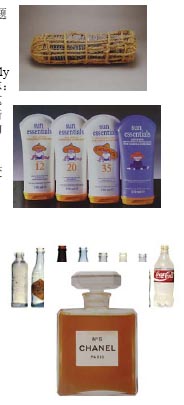The third paper packaging container structure design and manufacturing
Introduction to paper packaging
Section 1 About Paper Packaging
First, paper packaging research object, nature and learning purpose
1. Research object:
Paper packaging research is the paper packaging products, referred to as paper packaging. The so-called paper packaging is a paper or paper-based packaging products, such as paper boxes, cartons, paper bags, paper tubes, paper cans, paper drums and various pulp Molded products, etc. In addition, the “daily products†such as paper cups, paper trays, paper bowls, paper bottles, etc. that have emerged in recent years are also our research subjects.
Section II paper packaging overview
China is the hometown of paper.
In 1885, British businessman William Liver was the beginning of the entry of commodity packaging into the market.
At the beginning of this century, the invention of a corrugated box took place in the famous Los Angeles "Predham case", which opened a glorious page in the history of the development of paper packaging.
Metal, glass, plastic, composite materials and other packaging have risen one after another.
First, the status of paper packaging in the field of packaging
1. Advantageous position of paper packaging in competition
The international research report pointed out that the consumption of packaging paper and cardboard in the United States is on the rise. Environmental issues are the main reason why paper packaging products can compete with plastics.
There are many other advantages of using paper/cardboard packaging.
2, "environmentally friendly" packaging
U.S. Market, "Environmentally Friendly" Packaging (Environmentally-friendly)
The increase in the demand for packaging is 3 times faster than the total volume of packaging. Reuse cardboard sign:
It consists of three arrows. The first arrow represents the recycling of waste paper. The second arrow represents recycling or processing of these waste papers into high-quality, durable and competitively priced cardboard. The third arrow represents the participation of consumers. - Reuse of cardboard. The three arrows form an eternal ring.
3, the status of paper packaging industry
The United States is the birthplace of corrugated boxes and other paper packaging, representing the changing situation of the international paper packaging industry.
The paper packaging industry in China has made great progress in more than a decade.
Second, the raw material of paper packaging
1, cardboard
The thickness is generally between 0.3 and 1.1 mm, thinner Manila cardboard (for production of small cartons) and thicker white cardboard (for production of large cartons).
1 Manila cardboard: Light yellow cardboard made from chemical pulp with groundwood pulp.
2 white board: made of chemical pulp with waste pulp.

3 Yellow board: Low-grade paperboard made of pulp made from lime using straw as a raw material, which is mainly used as the core of paste carton (fixed carton).
4 Kraft board: Cardboard made from sulphate pulp.
2, processing cardboard 1 composite processing cardboard: refers to composite aluminum foil, polyethylene, greaseproof paper and other materials of cardboard.
2 Matteboard: Refers to the processing of cardboard, which is embossed on the surface of the board with a pockmark, a cloth pattern or a checkered pattern.
3 Water-resistant Kraft paperboard: impregnated with water-resistant resin, mainly used to manufacture multi-piece beverage collection packaging boxes.
3. Corrugated paperboard mainly consists of outer paper and inner paper with corrugating medium in the middle, and each paper sheet is bound by adhesive.
1 corrugated board paper: divided into paper and corrugated paper.
a. Face Paper: The outer layer of corrugated cardboard.
Kraft Paper: Pasta paper made from 100% kraft pulp.
Jute-faced paper: Face paper made with a certain proportion of kraft pulp and recycled waste kraft pulp.
Chipboard: Made from straw and waste pulp.

Paste paper has the following four characteristics:
Production speed adaptability; easy stickiness; deformability; printability.
b. Corrugated paper: Pretreatment of wood chips with chemicals.
Secondary fiber (waste paper) core paper: Includes various grades of secondary fibers.
Grassboard: 25% straw pulp with 75% waste pulp of various qualities and grades.
Kraft paper:
2 corrugated board shape: divided into V-shaped, U-shaped and UV-shaped three.
aV shape: Poor buffering performance, strong pressure resistance, difficult to bond.
bU shape: its buffering performance is good, anti-pressure is weak, easy to bond.
c. UV shape: both advantages.
3 The corrugated type of corrugated board refers to the type of corrugated model, which is the different classification of corrugation size, density and characteristics.
There are generally four types of A, B, C, and E.
aA 楞:
b. B 楞:
c. C 楞:
d. E 楞:

The use of four types of cesium:
Outer packaging - A, B, C 楞;
In the packaging - B, E 楞;
Small package - E 楞.
4 corrugated board types
a. single-sided corrugated cardboard
b. Double-sided corrugated cardboard
c. Double core double-sided corrugated cardboard
d. Three-core double-sided corrugated cardboard
eX-PLY super corrugated cardboard
4, preservation of cardboard 1 polyethylene sandwich type: polyethylene film as a preservation layer sandwiched between cardboard, outside the paper.
a. Antimicrobial soaking;
b. Coating CTM preservatives;
c. "Hato Fresh P" cling film.
2 composite type: the cling film or vacuum aluminum composite laminated to the inner and outer paper.
a. Both inside and outside the composite vacuum aluminum film;
b. Inside composite vacuum aluminum plating, polyester (PET) film;
c. Inside composite cling film;
d.Cool, Dan corrugated board, outside composite vacuum aluminized film, inside composite foamed plastic;
e. Inside composite foamed polyethylene, polypropylene, vacuum aluminized film and PET film;
f. Inboard composite Stylen polystyrene membrane.
3 combination type
a. The combination method is: kraft paper/corrugated paper/special plastic foam/kraft paper.
b. Composite foamed LDPE layer on the inside of double-sided corrugated cardboard.
c. High paper thermal foaming PSP layer combined with the inside of the corrugated cardboard.
d. Cold Packing: Composite microcellular foam between face paper and corrugated cardboard.
4 Hybrid In the papermaking process, a porous type B gas absorbing powder is added to the inner paper.